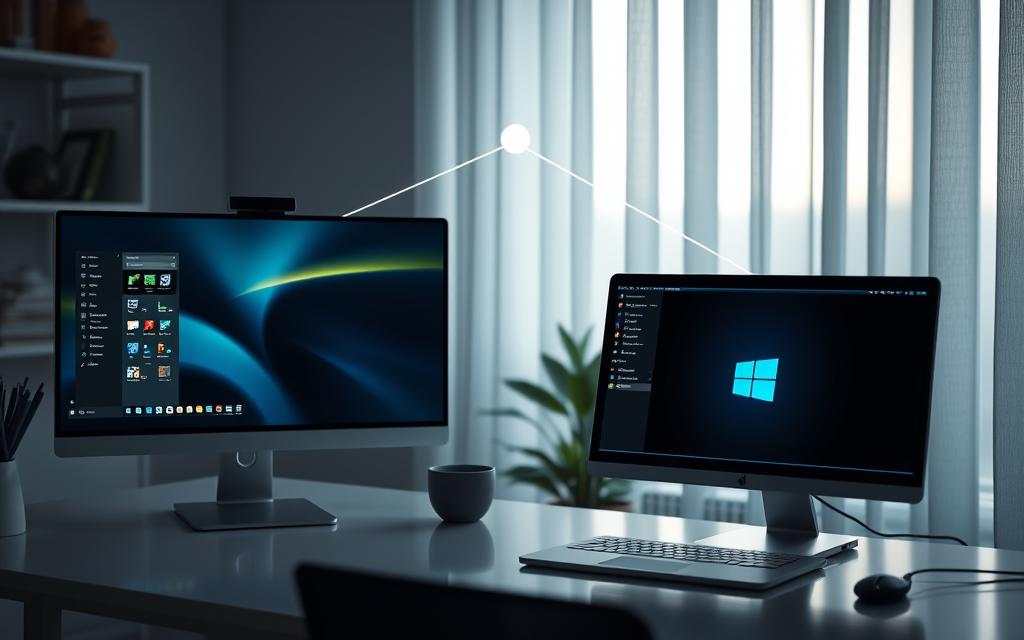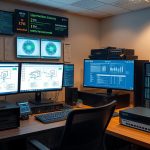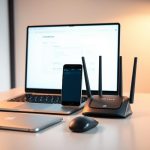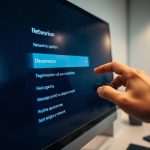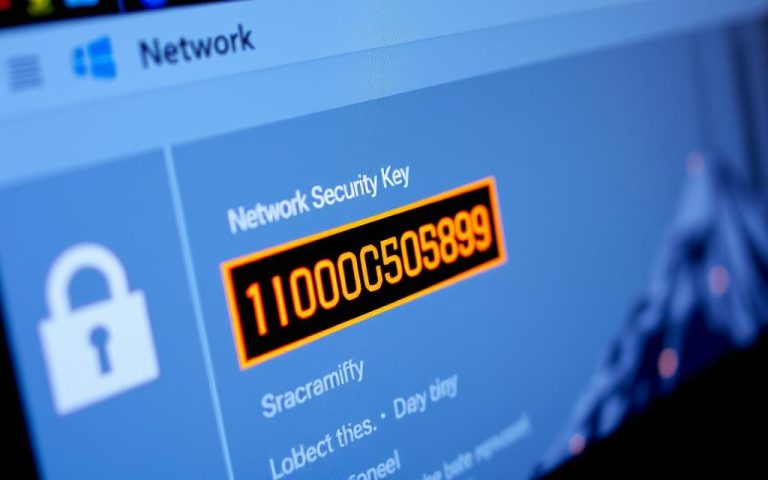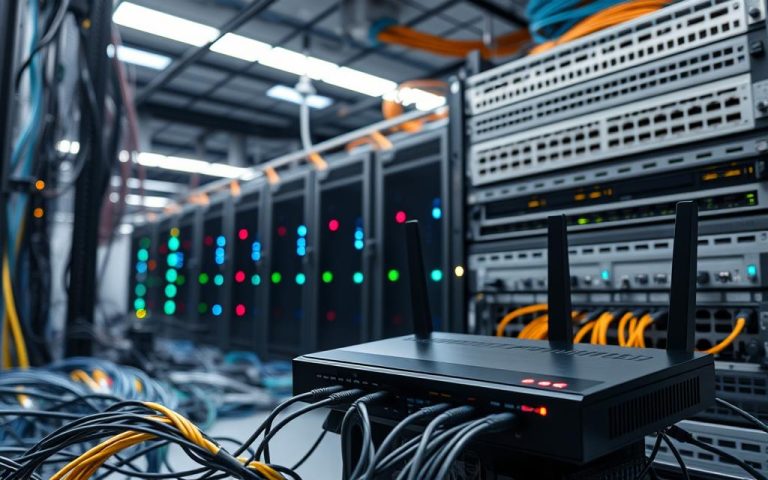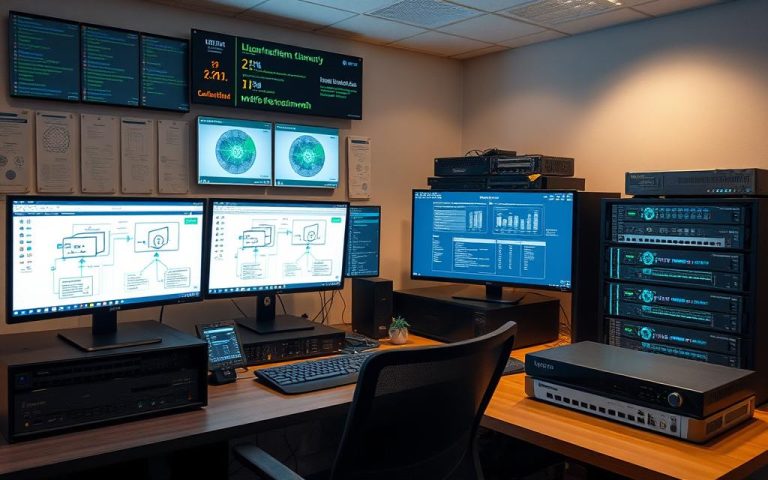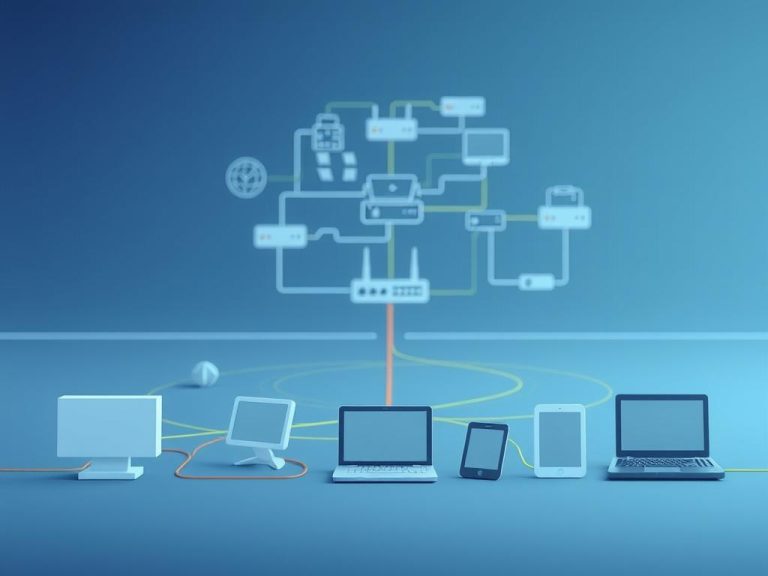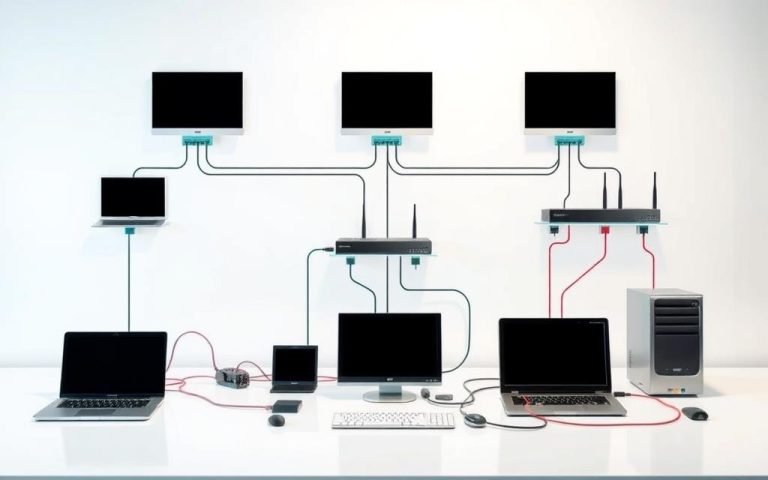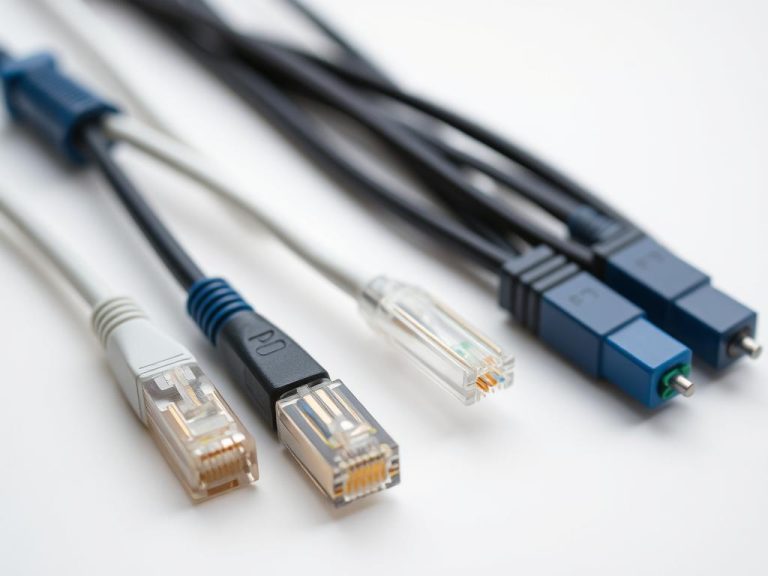How to Access Another Computer on Your Network: A Simple Guide
Remote work and collaboration are on the rise. This means we need to access other computers on our network more often. Remote desktop access lets us control and manage computers from afar. It’s key for IT support and system administration.
82% of IT pros say remote desktop tech is vital for their jobs. Network computer access and remote control are at the heart of this. They let us access and manage computers from anywhere.
Choosing the right remote desktop tool is important. Security, compatibility, and performance are top concerns. 75% of IT pros focus on security first. Tools like Chrome Remote Desktop are popular for their cross-platform use and security.
In this guide, we’ll cover the basics of network computer access. We’ll look at different network connections and what you need to access a network. We’ll also talk about the key features of remote desktop software, like speed and security.
Whether you’re in IT or just need to access another computer, this guide has you covered. It will teach you how to use remote desktop access and remote control.
Understanding Network Computer Access Basics
Network computer access lets users share resources and communicate over a network. It’s key to know the types of network connections and what’s needed for access. Remote desktop connection plays a big role in this.
Network basics include the type of connection, like LANs, WANs, or Wi-Fi. You also need the right hardware and software. A stable internet, router, and NIC are must-haves for a network.
https://www.youtube.com/watch?v=hub-HPklelc&pp=ygUSI3RoZWV4cGxvcmVuZXJ3b3Jr
Knowing about LANs, WANs, and Wi-Fi is vital for network access. Each has its own needs and features. Understanding these basics helps users use remote desktop connection effectively.
Important aspects of network access include:
- Network architecture: This is the design and layout of a network, including how devices are arranged and data flows.
- Network protocols: These are the rules for data communication over a network, ensuring devices can talk to each other smoothly.
- Network security: This is about keeping the network safe, using encryption, firewalls, and access control to prevent unauthorized access and data breaches.
By grasping these basics and the role of remote desktop connection, users can fully enjoy network access. They can have secure, efficient communication and data exchange.
Essential Network Settings to Check First
Before you start with remote desktop access, make sure to check your network settings. You need to configure your firewall correctly. This means verifying remote connection permissions and adjusting Windows Firewall settings.
Network settings are vital, and so is the firewall. It protects your computer from unwanted access. To keep your computer safe, allow certain ports and programs while blocking others. This ensures your remote desktop connection is secure.
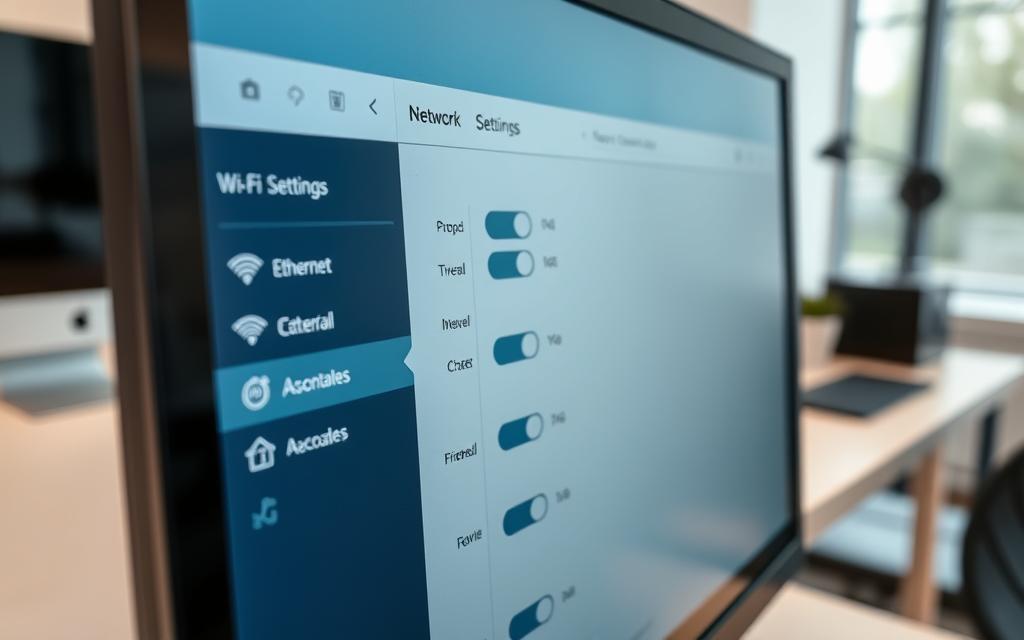
- IP address and subnet mask
- Default gateway and DNS server settings
- Firewall configuration and rules
- Remote desktop settings and permissions
By checking these settings, you can make sure your network is set up right. This ensures your remote desktop connection is safe.
| Network Setting | Description |
|---|---|
| IP address | A unique address assigned to your computer on the network |
| Subnet mask | A mask that determines the scope of the local network |
| Firewall configuration | Settings that control incoming and outgoing network traffic |
By following these steps, you can have a secure and stable remote desktop connection. Always keep your network security in mind and adjust your firewall settings as needed.
How to Access Computer in Network: Windows Methods
There are several ways to access another computer on a network using Windows. One popular method is Windows remote desktop. It lets users control another computer from afar. This is done through the Remote Desktop Protocol (RDP), making the connection safe and reliable.
To use Windows remote desktop, first, enable it on the host computer. Then, set up your network to allow remote access. The Windows file sharing guide can help with this. It also shows how to share files between computers on the same network.
Windows remote desktop offers many features. These include remote control, file transfer, and handling multiple sessions. To connect to another computer, you need to know its name and the port number, usually 3389. Here are the main steps to set it up:
- Enable Windows remote desktop on the host computer
- Configure the network settings to allow remote connections
- Obtain the remote PC name
- Set up the RDP connection using the remote PC name and port number
By following these steps, accessing another computer on the network becomes easy. This is very helpful for IT admins. They can manage and fix network problems from a distance.
| Feature | Description |
|---|---|
| Remote Control | Allows users to control another computer remotely |
| File Transfer | Allows users to transfer files between computers |
| Multi-Session Handling | Allows multiple users to connect to the same computer simultaneously |
Accessing Computers on Mac Networks
To access computers on Mac networks, use the Mac remote desktop feature. It lets you control another Mac computer from afar. This is handy for screen sharing and moving files around. Make sure file sharing is on and both computers are on the same network.
Connecting to another computer is easy. You can browse or type in the computer’s network address. You can also connect as a Guest, a Registered User, or through an Apple Account. For detailed setup guides, check out the University of Minnesota’s IT website.
Connecting to a Windows computer from a Mac might ask for the Windows password. This password should be 14 characters or less. You might also need to enter the network area or workgroup. For a stable connection, turn off the Internet Connection Firewall on Windows or open TCP port 445. You can also use TeamViewer to access Mac computers remotely.

If you need to disconnect a computer from a network, there are guides for that too. The PC Site has a step-by-step guide on safe network disconnection. By following these guides and using the right software, you can easily access Mac networks and share files and screens.
Setting Up Proper Network Permissions
Setting up the right network permissions is key for safe and smooth network access. It means setting up user accounts, giving the right permissions, and managing who can access what. This way, admins can control who sees or changes certain files and folders on the network.
Network permissions decide how much access users get to network resources. There are different permissions like Full Control, Modify, and Read & Execute. Each one lets users do different things, like viewing or changing files. For example, Full Control lets users do almost everything with a file or folder.
Configuring user accounts is also important for network permissions. This means making user accounts, setting permissions, and managing who can access what. Admins can use security groups to make it easier to manage permissions. This way, they can give permissions to many users at once, making it simpler to manage.
User Account Configuration and File Sharing Permissions
Setting file sharing permissions is also key for managing network access. It’s about deciding how much access users have to shared files and folders. Admins can choose to let users read, write, or execute files, based on their needs. This ensures that only the right people can see or change sensitive data.
Keeping an eye on network access rights is a continuous task. Admins need to check user accounts, permissions, and access rights often. This includes removing access for former employees, updating permissions for new ones, and watching for any odd network activity.
Security Measures for Safe Network Access
Network security is key to keeping computer networks safe from harm. It stops unauthorized access, use, and damage. In 2022, 83% of companies faced more than one data breach. This shows how important strong security is.
Encryption protocols, like SSL/TLS, are vital for secure network communication. They encrypt data, making it safe from prying eyes. Two-factor authentication also helps by checking who’s on the network.
To boost network security, setting up a firewall is a good idea. Here’s how to do it right:
- Start by blocking all incoming and outgoing traffic by default
- Only let through the traffic you really need
- Keep your firewall software and rules up to date

With these steps, you can lower the risk of cyber-attacks. Network security is growing fast, with a 35% increase in jobs by 2031. It’s a critical part of today’s computing world.
| Security Measure | Description |
|---|---|
| Encryption Protocols | Use algorithms to encrypt data, making it unreadable to unauthorized parties |
| Authentication Methods | Verify the identity of users and devices, preventing unauthorized access to the network |
| Firewall Configuration | Block unauthorized access to the network, allowing only necessary traffic to pass through |
Troubleshooting Common Connection Issues
When facing connection issues, it’s key to follow a clear plan for troubleshooting. First, check if remote connections are allowed. Then, adjust the Windows Firewall settings. The guide on network troubleshooting steps suggests starting with hardware checks. Tools like ipconfig, ping, and tracert can also help fix network problems.
Common connection issues include slow networks, weak Wi-Fi, and physical problems. Finding the main cause is vital. Then, use the right troubleshooting methods. This might mean fixing cables, boosting Wi-Fi, or sorting out IP address issues.
Here are some steps for tackling common connection issues:
- Check hardware connections and cables
- Use command-line tools like ping, tracert, and ipconfig
- Improve Wi-Fi signal and fix IP address problems
By taking these steps and using the right troubleshooting methods, you can quickly solve network problems. Regular updates, monitoring, and upkeep can also stop connection issues before they start.
| Common Connection Issues | Cause | Troubleshooting Steps |
|---|---|---|
| Slow Network Issues | New apps using too much bandwidth, faulty switch ports, or more traffic | Check cables, use command-line tools, and tweak network settings |
| Weak Wi-Fi Signals | Changes in the office, physical barriers, or device interference | Boost Wi-Fi, fix IP address issues, and use Wi-Fi analyzers |
Advanced Network Access Features
Advanced network access features give users more control over their network. One key feature is remote wake-on-LAN. It lets users wake up their computers from afar, making it simpler to manage devices over the network.
Another vital feature is cross-platform access. It allows users to reach devices and resources on different operating systems. This is super helpful in places where many devices and systems are used.
Remote Wake-on-LAN Setup
To set up remote wake-on-LAN, users must tweak their network settings. They also need to make sure their devices can handle this feature. This involves turning on wake-on-LAN in the device’s BIOS settings and setting up the network for remote wake-up requests.
Cross-Platform Access Solutions
Cross-platform access solutions, like TeamViewer, offer a safe and dependable way to access devices across various platforms. These solutions come with advanced features like remote desktop access, file transfer, and chat. They make it easier for users to work together and manage devices from afar.
Using advanced network access features, like remote wake-on-LAN and cross-platform access, boosts productivity and efficiency. It also improves network security and management. These features add flexibility and convenience, making it simpler to access and manage devices and resources remotely.
Benefits of advanced network access features include better network management, enhanced security, and increased productivity. These features also offer more flexibility and convenience. They make it easier to access and manage devices and resources from anywhere.
Conclusion: Best Practices for Network Computer Access
Following the best practices for network computer access is key to keeping your data safe. Using strong authentication like two-factor authentication and secure passwords helps a lot. Also, using encryption, managing network permissions, and setting up firewalls can reduce risks.
Network traffic analysts are important in spotting and fixing security issues. They use their skills to find and solve threats like malware, data theft, and unauthorized access. A strong network security plan helps protect valuable assets and keeps the network safe.
If you want to learn more about secure network access, check out industry publications, online tutorials, and professional certifications. Staying up-to-date and proactive keeps your network safe from cyber threats.
FAQ
What is network computer access?
Network computer access lets you control a computer from another on the same network. It’s key for remote work and teamwork today.
What are the different types of network connections?
There are LAN, WAN, and Wi-Fi network connections. The type you use affects how you set up remote access.
What are the prerequisites for network access?
You need the right hardware (like routers) and software (for remote desktop) for network access. Make sure everything is set up right.
What network settings should I check before setting up remote desktop access?
Check if remote connections are allowed and that the Windows Firewall lets remote access through.
How can I access another computer on a Windows network?
Use Remote Desktop Protocol (RDP) on Windows to connect to other computers. You can also share files and printers and use Quick Access.
How can I access computers on a Mac network?
Use Mac’s screen sharing to connect to other computers. You can also use TeamViewer for remote access to Macs.
How do I set up proper network permissions?
Set up user accounts, file sharing permissions, and network access rights. This keeps only allowed users from accessing your network.
What security measures should I implement for safe network access?
Use encryption like SSL/TLS, two-factor authentication, and a well-configured firewall for safe access.
How can I troubleshoot common connection issues?
Check remote connection permissions, adjust Windows Firewall settings, and ensure network settings are correct.
What are some advanced network access features?
Features include remote wake-on-LAN and cross-platform access. Use software like TeamViewer for access across different platforms.

